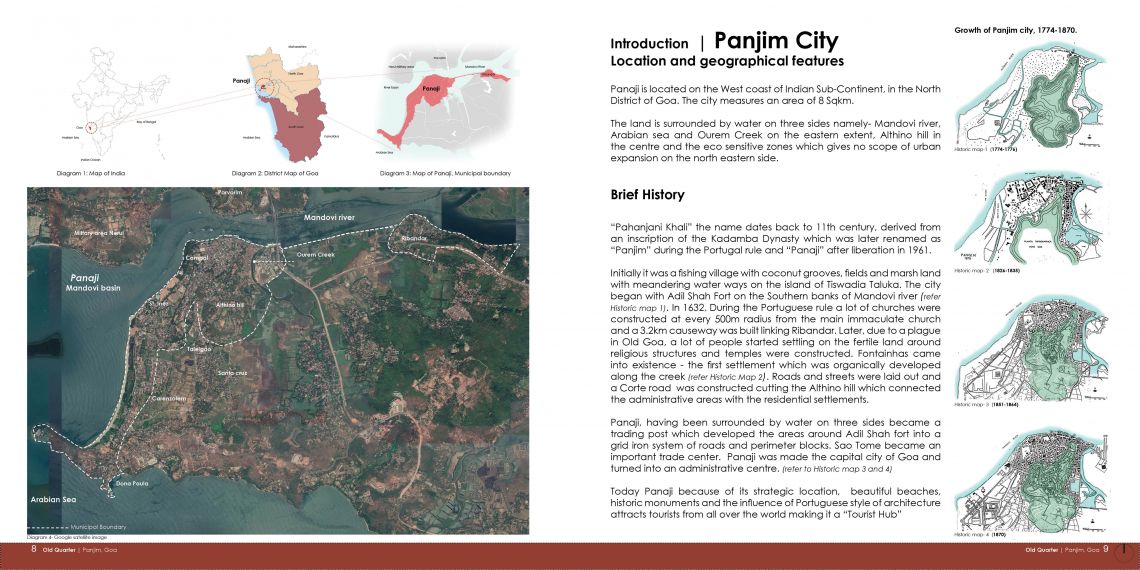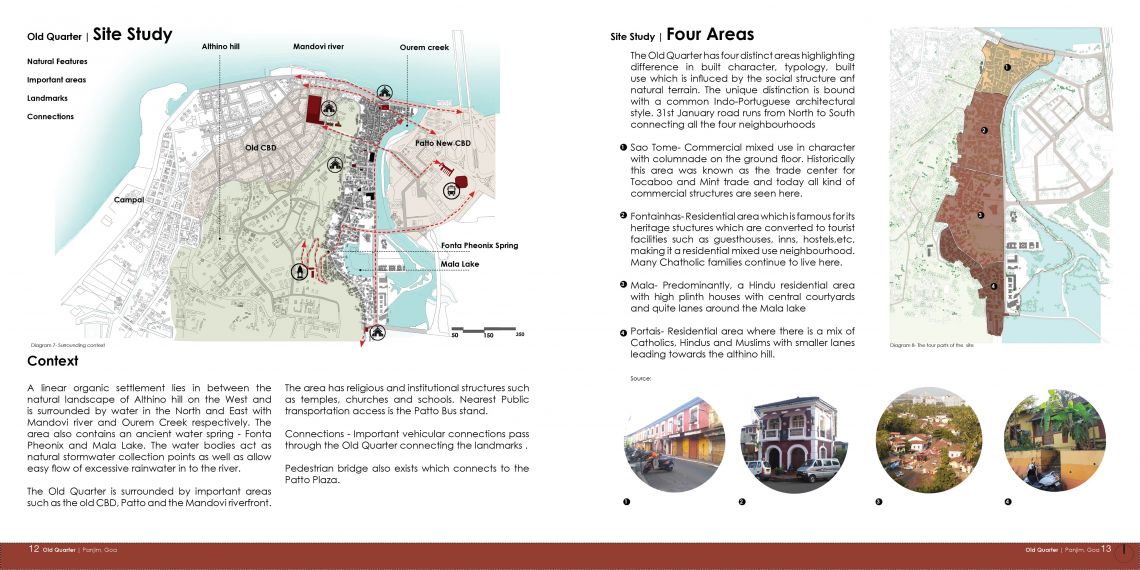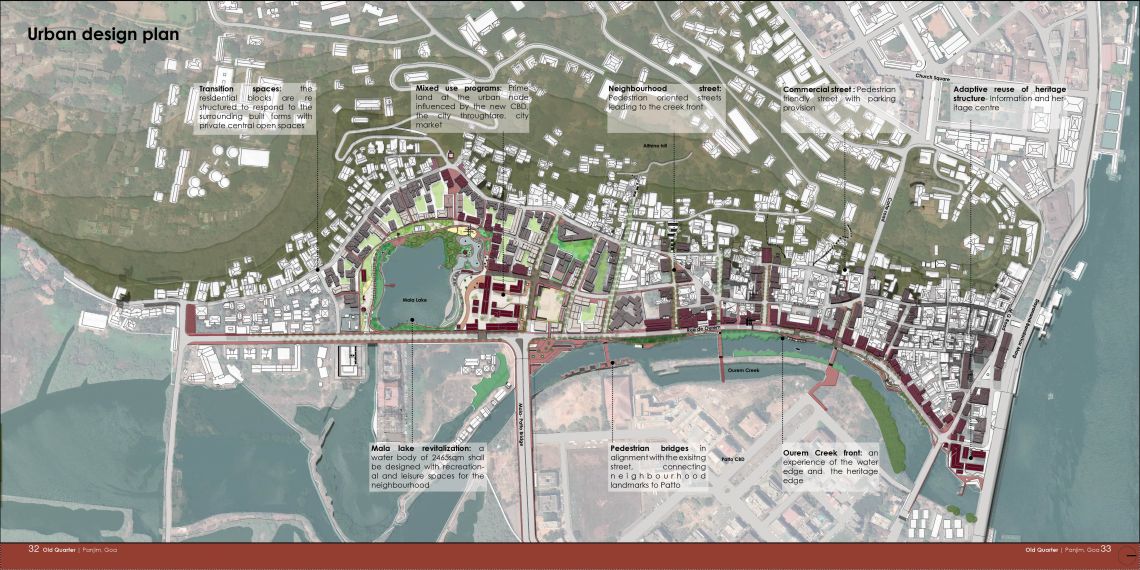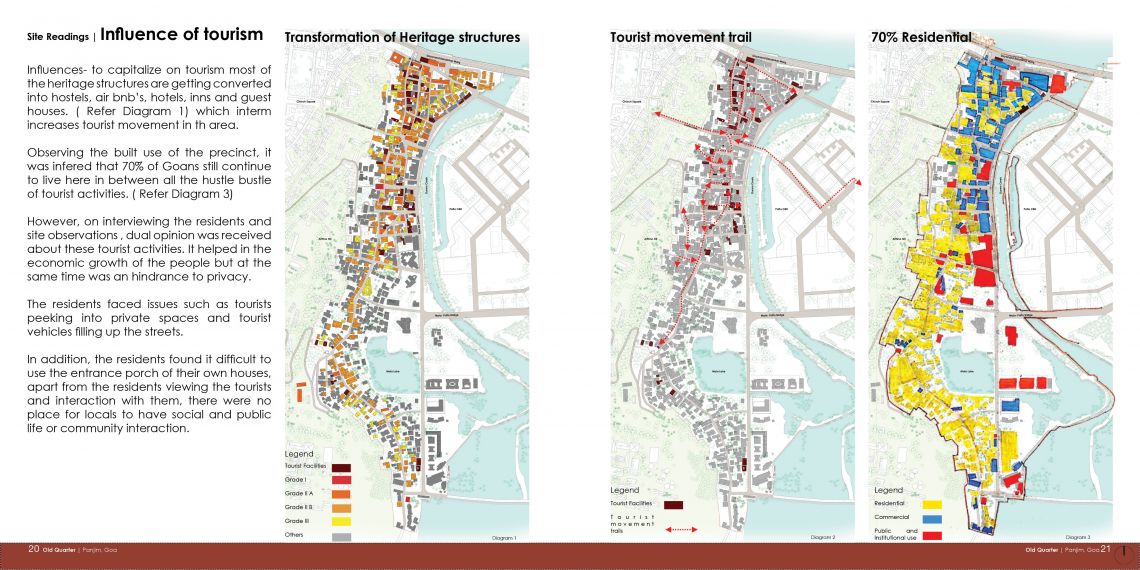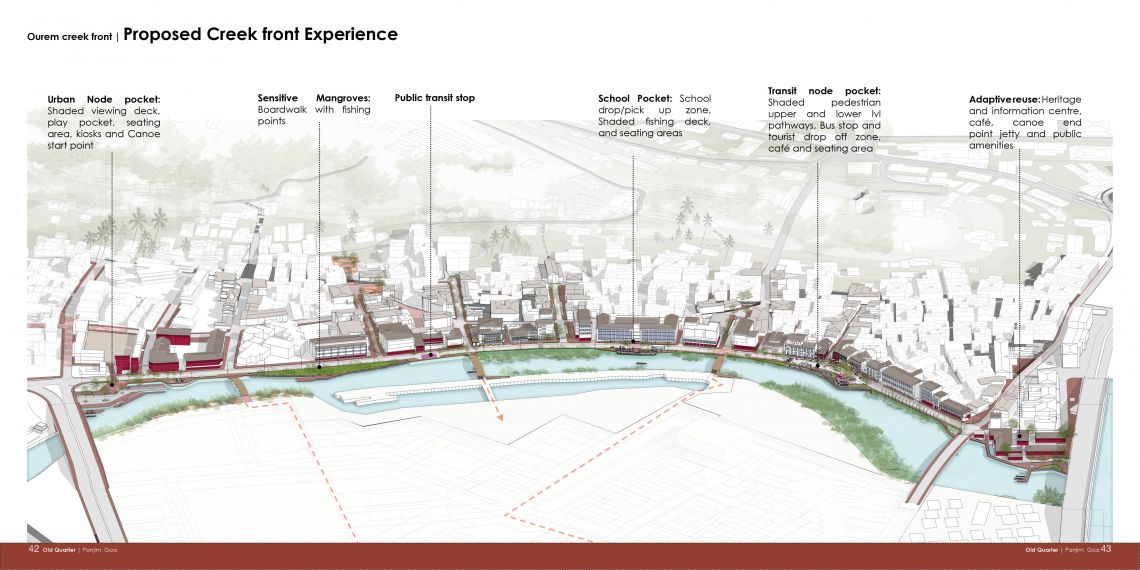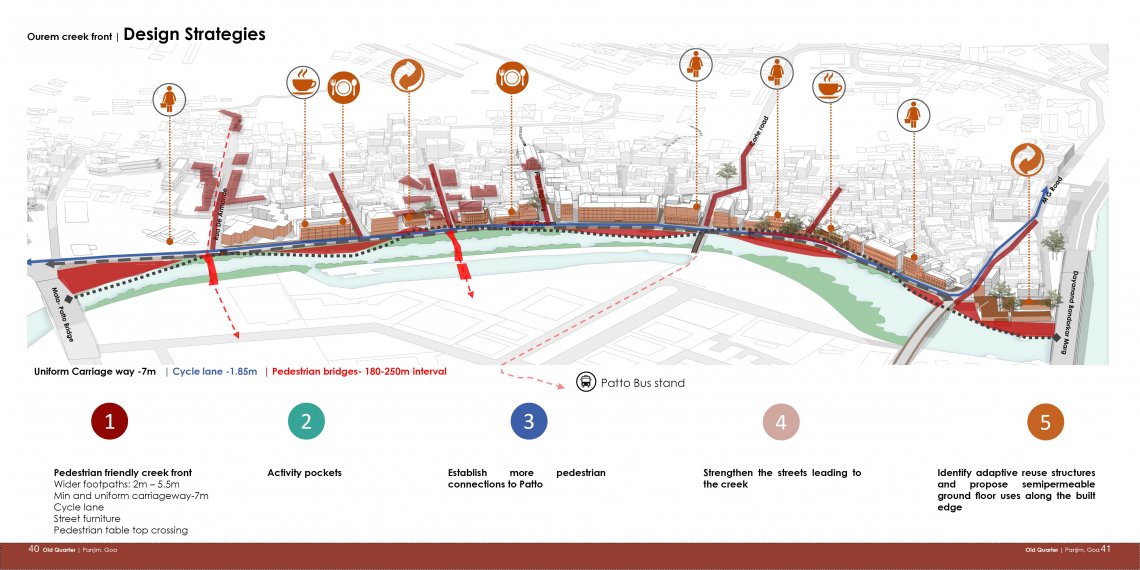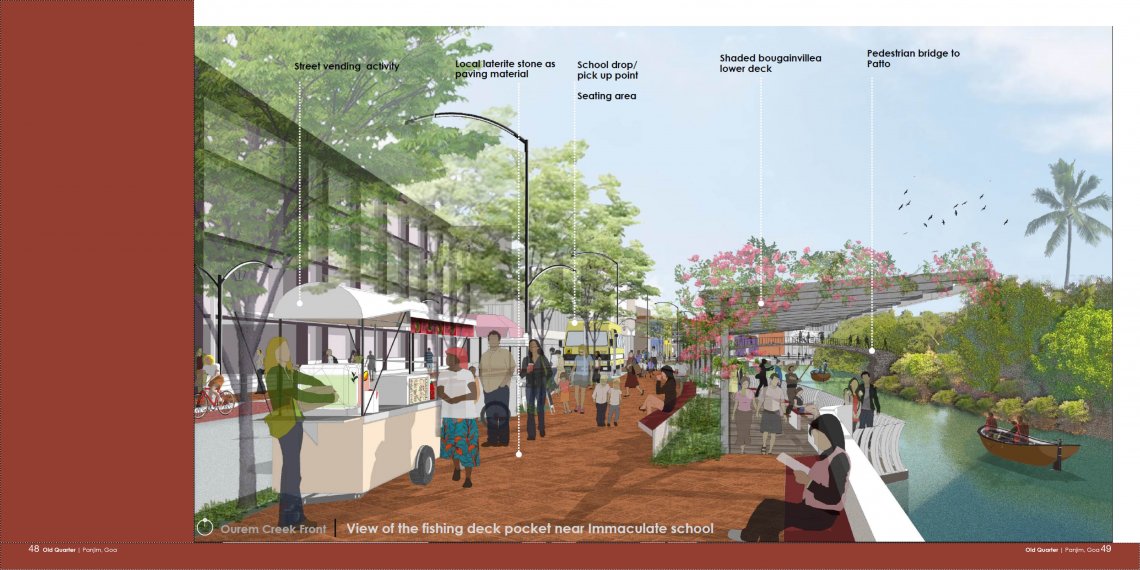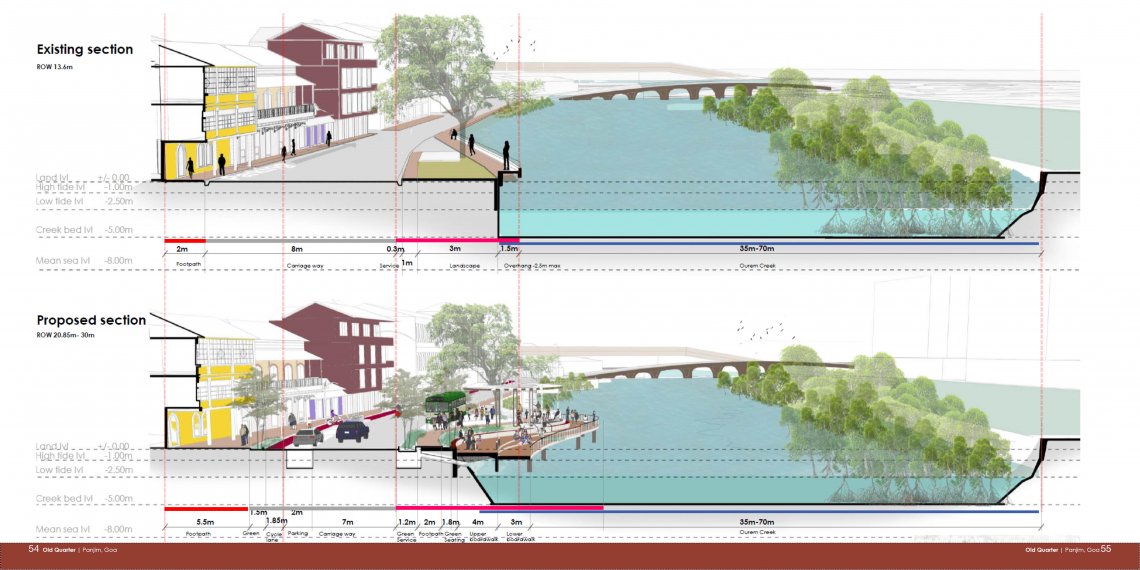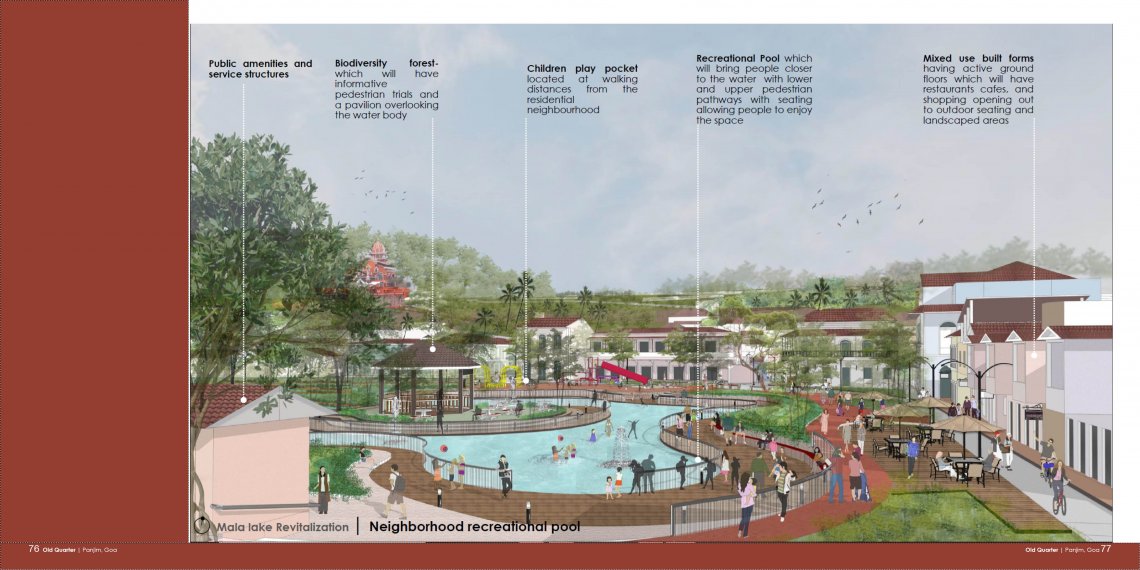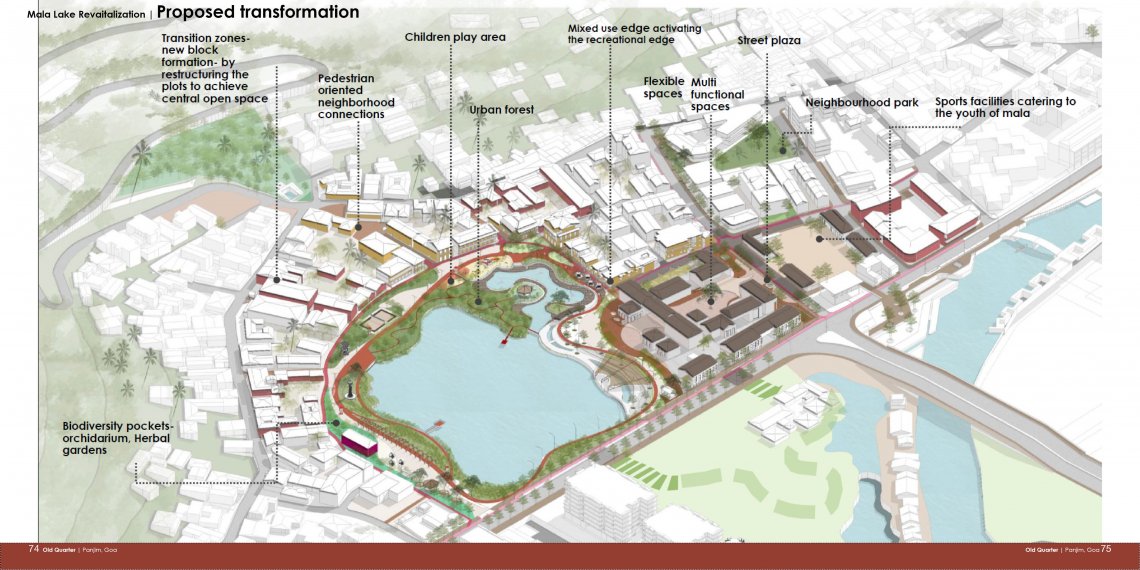Your browser is out-of-date!
For a richer surfing experience on our website, please update your browser. Update my browser now!
For a richer surfing experience on our website, please update your browser. Update my browser now!
Old Quarter is a distinct place that carries the reminiscences of Portugal rule in India, with bright coloured heritage structures, Indo-Portuguese architectural character and its walkable perimeter blocks which make it stand out from the rest of the areas in Panjim. Established in the 1800s as an organic settlement on the Tiswadia island- the land of coconut groves, it lies between the eastern foothill of Althino and the Ourem creek. The settlement initially housed migrants from Old Goa and later became a residential area housing traders, smiths, artists, and merchants. The old quarter consists of four parts Sao Tome, Fontainhas, Mala and Portais. Being one of the oldest residential areas of Panjim with distinct character influenced by Portuguese, Art Deco, British colonial and local Goan architectural styles, the Old Quarter attracts tourists to visit and experience the culture, lifestyle, and food. Also, the area is known for its institutions and religious landmarks like schools, churches, and temples, which host seasonal celebrations gathering local people. Also, water features such as the creek and the lake are amongst the many natural assets of the place. Historically, the streets, the spaces in front of religious structures and porches in and around houses were used as spaces for community interaction and leisure. However, issues of haphazard vehicular movement and parking of tourist vehicles on its narrow neighborhood streets and nodes made it unsafe for pedestrian usage. Also, to capitalize on tourism, several structures are getting transformed into hotels, inns, hostels, guest houses, cafes and restaurants in Fontainhas and Sao Tome. An important point to be noted that 70% of the local population still live here and in many cases, the privacy of the residents is hampered by tourists peeking into private spaces. In Mala, the open spaces and playgrounds are under pressure from profitable developments due to the influence of the new CBD of Panjim i.e. Patto which was opposed by the residents in the past. The question this project aims to address is: where are the spaces for recreation, social interaction, and leisure for the residents? The city of Panjim has a lot of beaches, riverfront and places to visit. Unfortunately, these cannot be accessed everyday due to the distance from the residential neighbourhood of Fontainhas. The only recreational public open spaces at walking distances from the neighbourhood are the creek front and the Mala lake. These two waterfront projects are listed under the smart city mission as well. The envisioned projects aims to revitalize Old Quarter’s underutilized water bodies- the Ourem creek front and Mala lake by transforming them into vibrant public spaces at walkable distances in the neighborhood. These projects will not only have a beautiful edge of architectural character for the tourists but also create a place for recreation for the Goans. The key objectives were to create pedestrian-friendly and well connected open spaces along the water edge which will activate the spaces and cater to different user groups and programs. A public transit line is introduced along the creek front road connecting to the mala lake with multiple hop-on and hop-off points which will help in discouraging the use of private and rental vehicles by the people as well as the tourists. As one walks from the northern portion of the Old Quarter along the creek front- there are different kinds of walking and cycling experience with pause points of plazas, boardwalks, bridges, fishing decks and recreational spaces along the water edge and existing built forms of Indo-Portuguese character on the other side with cafes, restaurants and mixed-use buildings. The experience further meets a large water body- the Mala Lake which will have multi-functional open spaces such as an amphitheater, informal markets, recreational spaces, plazas, biodiversity areas and playgrounds. The lake is surrounded by mixed-use built forms of nature interpretation center, museums, cultural spaces, co-work spaces, retail and rental areas, responding to the demands of new development. Lastly, both the projects are designed keeping in mind to retain the biodiversity of the place. The programs introduced have been based on a thorough study of the people’s needs and learnings from the failures of the projects proposed here earlier.
